
‘Oh Shit’ Moments that Validate the Need for SaaS Management
Table of Contents ToggleOh Shit! I’m Wasting MoneyOh Shit! We Have...
Back
Back
Search for Keywords...
Blog

Table of Contents
At Zylo, we help enterprises develop their SaaS Management strategy by enabling them to discover, manage, measure, and govern their SaaS applications using our patent-pending discovery engine and system of record.
While every customer has unique goals for establishing a SaaS Management approach, we frequently find common factors that start the conversation. Here are seven challenges organizations typically experience before they undertake a new approach to SaaS Management strategy.
If there are no rules, you’re not technically breaking them, right?
If your enterprise organization uses SaaS applications but has not defined a clear policy for how business units, teams, or employees should acquire new tools, it’s highly likely that shadow IT exists.
In many cases, SaaS tools are incredibly affordable to acquire and very easy to deploy. But in the absence of a defined organizational policy that addresses acquisition, they proliferate quickly. In fact, 84% of applications are purchased by lines of business and individual employees.
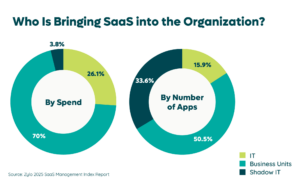
Defining and actively managing a process for acquiring new software tools is one of the most effective ways to tamp down on unmanaged SaaS tools and applications. Request forms, software review boards, and other approval processes can all aid in decreasing shadow IT.
In most cases, it’s relatively easy to reassign a SaaS license, switching it from an employee who no longer needs it to one who does.
If your company’s teams see the need to swap seats or licenses on a regular basis, it’s a good sign that SaaS application licenses or seats are not right-sized to the organization’s needs.
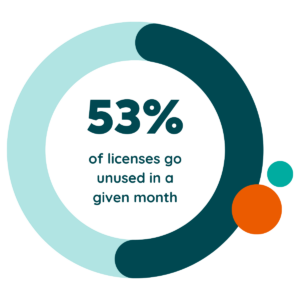
On the flip side, 53% of licenses at the average organization sit on the shelf unused. Having too many seats or unused licenses also indicates lack of right-sizing.
To prevent over- or under-estimating the actual number of SaaS licenses or seats needed, the ideal solution is a reporting tool or system of record that displays the current number of licenses or seats for each application in real-time, as well as assigned ownership information.
Is anyone still using that SaaS application they purchased six months ago? If you don’t have a window into the actual adoption and utilization of an application, it’s very difficult to answer the question and define the application’s continuing ROI.
Many SaaS applications offer relatively easy-to-use dashboards and reporting tools that can display per-user adoption or utilization metrics. However, scaling this reporting across an entire organization can be daunting because enterprises frequently maintain hundreds of unique applications.
An enterprise SaaS Management platform that features direct integrations into SaaS applications can save time and effort by displaying adoption and utilization data from a central system of record.
Does our team use BlueJeans for video conferences meetings or Zoom? Did Marketing store their campaign analysis files in Box or Dropbox? Does IT use Slack or Trello? Are we using Basecamp or Asana for project management? These types of questions are ever-present in organizations that don’t have strong enterprise SaaS Management.
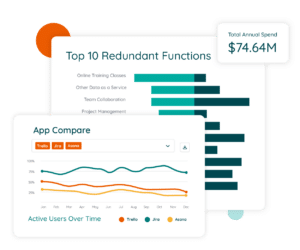 Enterprise software is supposed to enable better communication between teams and deliver the right information at the right time. If SaaS applications with redundant functions exist in discrete silos among teams, it often creates the opposite.
Enterprise software is supposed to enable better communication between teams and deliver the right information at the right time. If SaaS applications with redundant functions exist in discrete silos among teams, it often creates the opposite.
An enterprise SaaS Management strategy that organizes all information into a single system of record can help improve managing these tools in a number of ways.
First, it reduces the number of duplicate application purchases. Second, it limits friction by helping technology managers select applications to fulfill specific functions across the organization. And lastly, it enables negotiating enterprise license agreements that feature more favorable prices and terms.
Vetting a new SaaS tool takes time. It potentially slows down the speed teams deploy new tools, which is one of the unique advantages of SaaS.
However, if and when tools are not properly vetted, they introduce and multiply the risk of a costly, damaging breach. In the United States, the average data breach costs the victim organization $4.88M.
A SaaS Management strategy that includes a thorough vetting process can prevent multi-million dollar problems down the road.

For most organizations, budget accountability is the most important reason for creating an enterprise SaaS Management strategy.
The conversation typically goes like this: One day, the CIO or CEO asks, “How much do we spend on all the SaaS tools we have in the organization?” And for most organizations, the most immediately available answer is “We don’t know.”
The results of investigating this question can reveal astounding information. For many enterprise companies, the total investment in SaaS tools now represents spending of an average of $4,830 per employee – according to our SaaS Management Index. Cumulatively, SaaS applications can account for tens to hundreds of millions of dollars in spending for large enterprises.
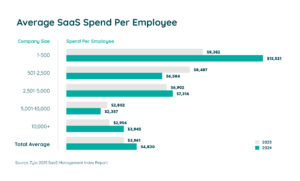
If left unchecked, unplanned, or unmanaged, this spending can wreak havoc on the bottom line. Containing these costs and improving long-term value all comprise primary financial goals for an enterprise SaaS Management strategy.
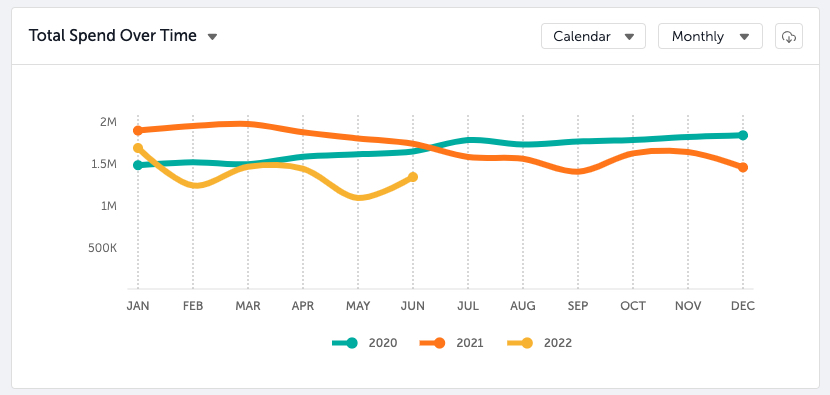
Unplanned SaaS application renewals contribute directly to unplanned SaaS spending. While affordability and easy deployment are hallmarks of SaaS applications, so are automatic renewal clauses.
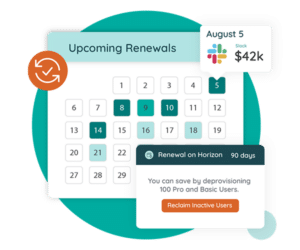 Automatic renewals can be convenient, but they become problematic if the application renews and its purpose, ownership, or utilization is unclear.
Automatic renewals can be convenient, but they become problematic if the application renews and its purpose, ownership, or utilization is unclear.
Essentially, even if your firm no longer needs the application but misses the notification period, you’re locked into paying for the application all over again.
Effective enterprise SaaS Management includes the use of a renewal calendar that prioritizes proactive decision-making well ahead of renewal dates.
Ready to start developing an enterprise SaaS Management strategy? Schedule a demo today to learn how Zylo’s SaaS Management platform unlocks insights that lead to improved enterprise value and effectiveness.
ABOUT THE AUTHOR

Eric Christopher
Eric Christopher is CEO and Co-Founder of Zylo, the leading SaaS management platform. After 14 years of buying and selling software, Eric knew there had to be a better way to manage cloud applications within a company. Eric started his career in sales at ExactTarget from 2002 to 2010. He spent the next six years in Chicago leading sales teams at Shoutlet and Sprout Social Inc., and founded Zylo in 2016.

Table of Contents ToggleOh Shit! I’m Wasting MoneyOh Shit! We Have...

Table of Contents ToggleEliminate Duplicate or Redundant SaaS ApplicationsProactively Manage SaaS...

Table of Contents ToggleRightsizing SaaS Step 1: Discover All SaaS Throughout...

In the past 4 years, Adobe has rapidly scaled from $9B to $18B. This growth has made an already complex environment even more complex. Learn how they leveraged Zylo to get complete visibility into their SaaS portfolio, unlock millions in cost savings and avoidance and improve the employee experience.
| Cookie | Duration | Description |
|---|---|---|
| cookielawinfo-checkbox-analytics | 11 months | This cookie is set by GDPR Cookie Consent plugin. The cookie is used to store the user consent for the cookies in the category "Analytics". |
| cookielawinfo-checkbox-functional | 11 months | The cookie is set by GDPR cookie consent to record the user consent for the cookies in the category "Functional". |
| cookielawinfo-checkbox-necessary | 11 months | This cookie is set by GDPR Cookie Consent plugin. The cookies is used to store the user consent for the cookies in the category "Necessary". |
| cookielawinfo-checkbox-others | 11 months | This cookie is set by GDPR Cookie Consent plugin. The cookie is used to store the user consent for the cookies in the category "Other. |
| cookielawinfo-checkbox-performance | 11 months | This cookie is set by GDPR Cookie Consent plugin. The cookie is used to store the user consent for the cookies in the category "Performance". |
| viewed_cookie_policy | 11 months | The cookie is set by the GDPR Cookie Consent plugin and is used to store whether or not user has consented to the use of cookies. It does not store any personal data. |
